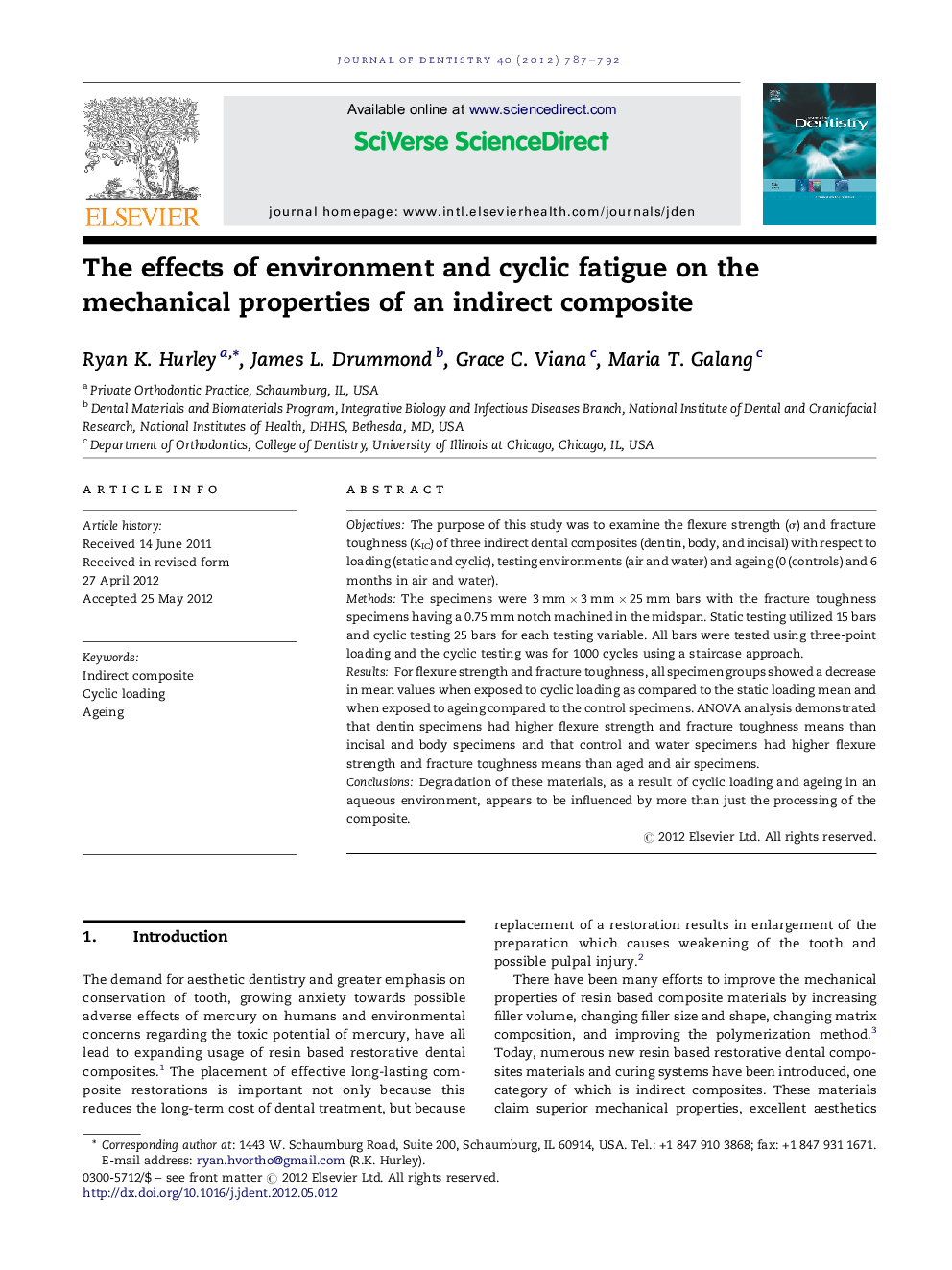| Article ID | Journal | Published Year | Pages | File Type |
|---|---|---|---|---|
| 3145070 | Journal of Dentistry | 2012 | 6 Pages |
ObjectivesThe purpose of this study was to examine the flexure strength (σ) and fracture toughness (KIC) of three indirect dental composites (dentin, body, and incisal) with respect to loading (static and cyclic), testing environments (air and water) and ageing (0 (controls) and 6 months in air and water).MethodsThe specimens were 3 mm × 3 mm × 25 mm bars with the fracture toughness specimens having a 0.75 mm notch machined in the midspan. Static testing utilized 15 bars and cyclic testing 25 bars for each testing variable. All bars were tested using three-point loading and the cyclic testing was for 1000 cycles using a staircase approach.ResultsFor flexure strength and fracture toughness, all specimen groups showed a decrease in mean values when exposed to cyclic loading as compared to the static loading mean and when exposed to ageing compared to the control specimens. ANOVA analysis demonstrated that dentin specimens had higher flexure strength and fracture toughness means than incisal and body specimens and that control and water specimens had higher flexure strength and fracture toughness means than aged and air specimens.ConclusionsDegradation of these materials, as a result of cyclic loading and ageing in an aqueous environment, appears to be influenced by more than just the processing of the composite.
